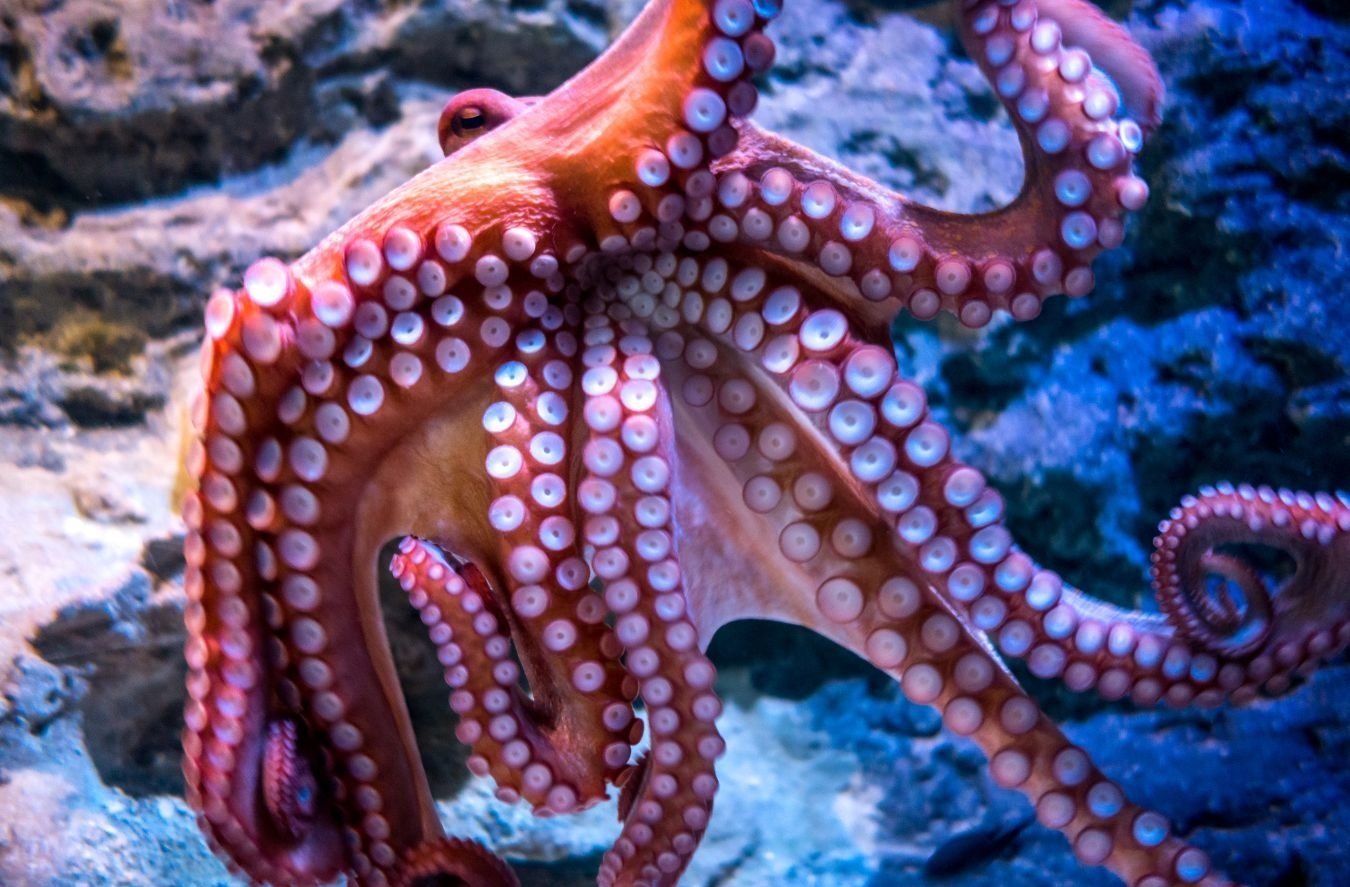5 Fun Facts about Octopuses! 🐙
Octopuses are one of the most intelligent invertebrates, and have even been observed using tools!
Did you know that, because each of the octopuses’ arms has its own mini-brain, the arms can continue moving and responding even if they are severed from the central brain?
5 Fun Facts about Octopuses 🐙
Octopuses are pretty unique creatures, but did you know how unique they really are? Here’s some fun facts about octopuses:
Octopuses have 3 hearts! Two hearts pump blood to their gills (they absorb oxygen from water through their gills, similar to fish), and one pumps blood to the rest of their bodies.
Bonus fact: octopuses have blue blood! This is because their blood uses hemocyanin to transport oxygen (hemocyanin is copper-based, whereas human blood uses hemoglobin, which is iron-based). Hemocyanin is more efficient in the ocean’s cold, low-oxygen environment.
Octopuses have 9 brains! First, they have a central brain (in their head) that controls complex behaviors, such as problem-solving, decision-making, and analyzing what they see surrounding them in their environment.
However, each arm also has its own mini-brain - a nerve center (ganglion) that can also independently process information. This allows each arm to perform tasks like exploring, grasping, and reacting to external inputs without needing direct input from the central brain.
Octopuses are masters of disguise! They can change colors due to specialized cells in their bodies called chromatophores, iridophores, and leucophores.
Chromatophores contain tiny sacs of pigments (like red, yellow, brown, or black), and are surrounded by muscles. Every time the muscles contract, these pigment sacs expand and make that part of the octopus change colors.
Iridophores reflect light, creating iridescent blues, greens, and silvers. Leucophores reflect ambient light, which helps the octopus blend into its surroundings.
Octopuses change colors to blend into their surroundings to avoid predators, as well as to express their moods. In fact, scientists have observed octopuses changing colors while sleeping, which they believe is a sign that octopuses can dream!
Octopuses have strange DNA! They have more DNA than humans - 33,600 genes and 28 chromosomes, compared to 20,300 genes and 23 chromosomes in humans. And what’s even more unusual is that they can also edit their RNA, which allows them to adapt much faster than humans can.
Octopuses have no bones! This makes them extremely flexible. They can squeeze through tiny openings, as long as it’s larger than their break (the only hard part of their body). They can use their flexibility to hide from predators and ambush prey. Some have even used it to escape from aquariums through drain pipes!


